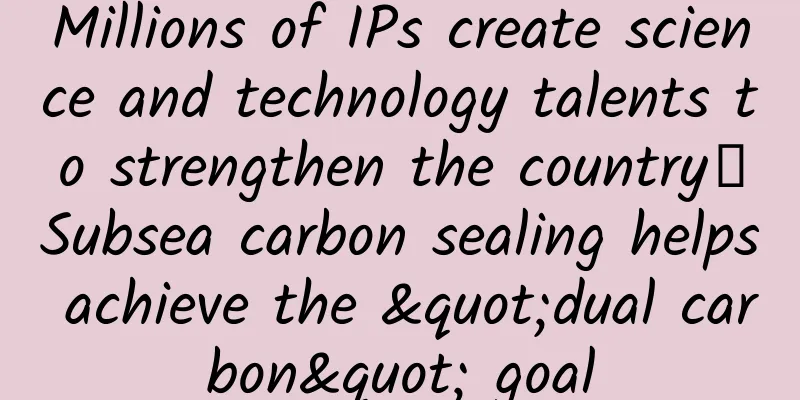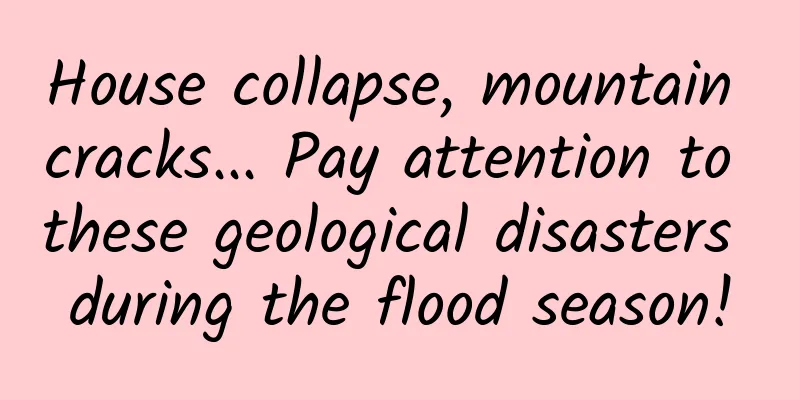Millions of IPs create science and technology talents to strengthen the country丨Subsea carbon sealing helps achieve the "dual carbon" goal

|
In June 2023, my country's first million-ton offshore carbon dioxide storage project was officially put into use on the Enping 15-1 platform in the eastern waters of the South China Sea, marking a major breakthrough in my country's carbon dioxide capture, utilization and storage technology, and injecting new vitality into the construction of a maritime power. Why do we need to store carbon dioxide in the seabed? What problems need to be solved to successfully capture carbon dioxide and store it in the seabed? This first starts with the particularity of the Enping 15-1 oilfield. The Enping 15-1 oilfield is the first high-CO₂ gas cap reservoir in the eastern part of the South my country Sea, that is, the CO₂ content in the associated gas extracted from the oil and gas field is relatively high. Usually, in the process of offshore oil and gas drilling and development, associated gas is inevitable, and CO₂ is an important component of associated gas. However, in most cases, the CO₂ content in associated gas is only 20%~30%, but the CO₂ content in the associated gas of the Enping 15-1 oilfield exceeds 95%, which significantly exceeds the conventional value. It is estimated that the total amount of CO₂ produced by the Enping 15-1 platform will exceed 1.5 million tons. Such a large amount of carbon dioxide is extracted together with crude oil, which will not only corrode offshore platform facilities and submarine pipelines, but also increase my country's CO₂ emissions. Therefore, it is necessary to find a reliable "destination" for these carbon dioxide. In fact, carbon capture, utilization and storage technology (CCUS) is recognized as an important measure to promote carbon reduction and one of the key technologies to achieve the "dual carbon" goal. It refers to the process of capturing CO2 from biological or fossil sources or the atmosphere and transporting it to a storage site for permanent isolation in geological structures. Since these carbon dioxides come from offshore oil fields, can they be directly stored on the seabed? There are many challenges here. First, where should the CO₂ be stored? Researchers found that there is a "dome"-like formation 3 kilometers away from the platform and 800 meters deep on the seabed. The space there is large and the sealing is strong, which is very suitable for permanent storage of CO2. After CO2 is injected into the formation, most of it can be permanently covered by the "dome", and the rest can be captured by the pores of the formation, some slowly dissolve in the formation water, and some react with rocks and formation water to form carbonate minerals. Then came the second problem: transporting CO₂ from the platform to the "dome" required building a channel, which was technically called a "reinjection well". However, the "dome" was 800 meters deep and 3 kilometers away from the platform, which meant that during the drilling process, for every 1 meter of vertical movement, the horizontal movement had to be more than 3 meters. This large-displacement reinjection well was very difficult to drill. To make matters worse, the strata in the area passed through were of low hardness and easy to break, and could not provide effective support for the drilling tools. There is a third problem related to the reinjection wells: CO₂ does not automatically separate from crude oil and enter the reinjection wells. It requires a series of processes such as capture, separation, and dehydration. In other words, the reinjection wells must not only be drilled, but also ensure that CO₂ can be injected and sealed. In view of the operational risks of reinjection wells and the special properties of CO₂, the project team focused on the key technologies of offshore CO₂ capture and storage of geological reservoirs, drilling and completion, and engineering integration through independent technological innovation. For example, a special drilling fluid was developed that can effectively resist acidic CO₂ corrosion, support the well wall, lubricate the wellbore, and "escort" the drilling process... In this demonstration system, high-carbon separators, CO₂ compressors, molecular sieve dehydration skids and other equipment are started in sequence, and CO₂ associated with oil field development is captured, separated, compressed, and then injected into the reinjection well in a supercritical state. The supercritical state is a "two-in-one" state of gas and liquid. It can fill the entire space like a gas, but its density is similar to that of a liquid. Finally, the supercritical CO₂ is transported to the seabed formation through the reinjection well and is permanently sealed there. It is estimated that after the completion of the project, 300,000 tons of CO₂ will be stored annually during the peak period, and the cumulative storage volume will exceed 1.5 million tons, which is equivalent to planting nearly 14 million trees. Under the background of "dual carbon", the successful completion of this offshore CO₂ storage demonstration project has not only achieved an important breakthrough in my country's offshore CO₂ storage field from scratch, but also provided technical support and conditions for the future rapid carbon reduction plan of "shore carbon into the sea". Text: Gu Miaofei, deputy editor of Science Pictorial, Shanghai Science and Technology Press Reviewer: Zhu Yehua, PhD in Environmental Engineering, Tsinghua University |
<<: Was it the dominant predator during the Triassic period, or the king of dragons?
>>: Typhoon Shanshan is extremely powerful. Which areas have become security "weak points"?
Recommend
Yunhe: The secret to building a wolf-like team
Yunhe: A complete guide to building a wolf-like t...
Yuzu Investment Classroom Series Courses (Third Phase + Fourth Phase + Fifth Phase + Sixth Phase + Highlights Edition)
Resource introduction of the Yuzu Investment Clas...
Overall trends in the tourism industry and advertising optimization strategies
When promoting the tourism industry, we often see...
The "Two Children Arguing About the Sun" that Confused Confucius, Who Is Right? Let's Look at It from the Perspective of Physics
"Two Children Arguing About the Sun" is...
Why are some rocks as old as the Earth, while others may be just born?
We often lament the importance of air and water t...
Beichen Asia Market: Analysis of Beijing’s Auto Market in January 2022
1. New car transaction situation In January, Beij...
The secret to reducing the cost of information flow video advertising by 50%, proven to be effective!
Short videos are surging, and various platforms h...
Do you want to be on the trending list? Read this before deciding
If a product with good ASO is like a famous celeb...
Unveiling Omicron: Will it be the last coronavirus variant to wreak havoc around the world?
Written by: Zhu Hengheng Editor: Wang Haha Layout...
Spread positive energy——Be a happy programmer
[[142148]] Introduction I am not good at writing ...
Information flow advertising material placement ranking competition, if you cooperate well, you will win!
A tank. I play jungle. Team fight in the middle l...
Zhejiang Provincial Education Examination Institute responds to the full score essay (with original text)
Zhejiang Provincial Education Examination Institu...
Sony's revival depends on game consoles
Sony recently announced that its PlayStation 4 vi...
Watch industry executives: Smart watches are too ugly
Apple has hired Patrick Pruniaux, vice president o...
How to deal with difficult-to-machine materials? Cooling technology can help!
Your browser does not support the video tag Autho...









